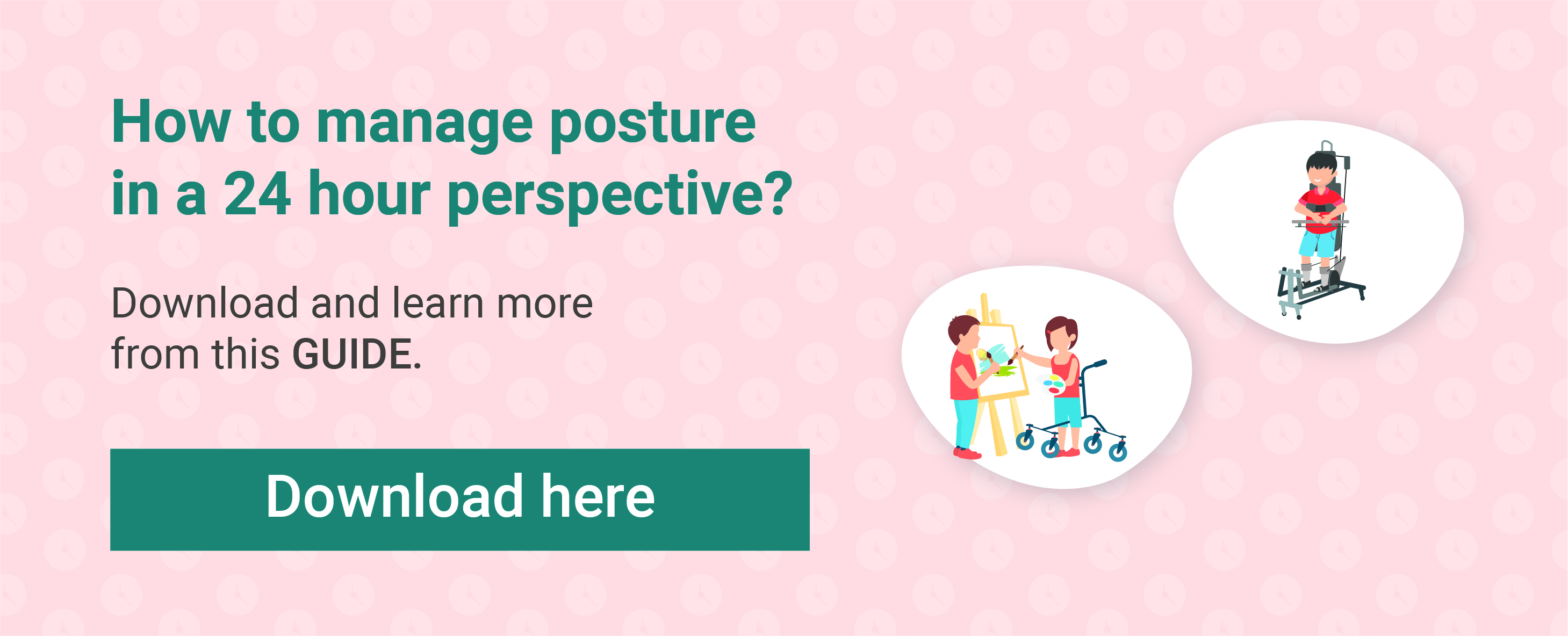
Aug 24, 2022New Innowalk study shows improvements in body functions and structures

Back to Blog Overview
Several improvements support the hypothesis that dynamic standing using the Innowalk is effective as an add-on to standard therapy in the treatment of children and young people with severe motor impairments.
The study included 46 patients where 50% were diagnosed with cerebral palsy and 50% with diverse syndromes. The results show improvements on:
- Passive assisted motion (79%)
- Stimulation of intestinal functions (71%)
- Body stability (64%)
- Joint mobility (56%)
- Secure means of allowing supine position (52%)
- Revision of abnormal motion patterns (48%)
- Postoperative joint mobility (33%)

Dynamic standing exercise as an add-on to standard therapy
People with neuromuscular disorders, such as cerebral palsy, are often experiencing spasticity, reduced muscle strength and joint contractures. The overall aims for therapy are:
- improvement of function
- compensation for the disability
- prevention of secondary conditions
- postural management
- quality of life
Treatment is complex and demands a multidisciplinary approach.
Different assistive devices are commonly used to compensate disability and are an integral part of the 24-hour postural care management. The Innowalk, a dynamic stander, has been used for such purpose in Germany since 2009 by people with neuromuscular disorders.
A newly published study in the Journal of Rehabilitation Medicine, indicates that dynamic standing with weight-bearing, is a promising alternative treatment and an add-on to standard therapy, for people with severe disabilities.
What is dynamic standing in the Innowalk?
The Innowalk enables assisted movement of the lower and upper limbs in sitting and standing position. The assisted movement of the lower limbs is close to a normal gait pattern with flexion and extension of hips, knees and ankle joints.
A research team in Germany have systematically gathered information on people in Germany who have been prescribed an Innowalk. This to understand more about indications, disability level, type of impairment, delivery of the intervention, outcome measure and perceived benefits in order to develop further research regarding dynamic standing.
You can read the full article “Dynamic standing exercise using the Innowalk device in patients with genetic and acquired motor impairments” in the peer review Journal of Rehabilitation Medicine here.
To give you a brief overview of the study, here’s an article summary:
Aim of the study
The aim of the study was to analyse retrospective reports on patients’ characteristics, indications, intensity of usage, goals and outcomes of dynamic standing using the Innowalk. This to form a basis for future study design.
Material and methods
The study included 46 patients with various neuromuscular diseases livening in Germany. They were all using the Innowalk as part of their treatment in the period between September 2014 and January 2019.
Reports including patient characteristics, goals, usages patterns, duration, frequency of use and standardized questions, where completed at baseline before the device was supplied to the patient and after a period of use.
Results
Of the 46 patients included in the study, 50% were diagnosed with cerebral palsy (n=23) and the other half had other diagnosis (genetic syndrome, acquired brain damage, developmental disorder, neuromuscular disorder, neurological disorder). The distribution between the Gross Motor Function Classification System where: GMFCS III (n=2), GMFCS IV (n=12), GMFCS V (n=10), not applicable (n=22). 91% of the patients were younger than 18 years of age (n=43).
The majority of the patients were using the Innowalk at home (70%), and some at kindergarten/school (17%). Other places of use were hospitals/rehabilitation centres and medical supply stores.
8 patients only conducted a single test of the Innowalk due to lack of insurance provider approval for further usage. For 36 patients it was long-term usage (2-52 weeks).
Reported outcomes after long-term usage for 36 patients were these improvements of symptoms:
- Passive assisted motion (79%)
- Stimulation of intestinal functions (71%)
- Body stability (64%)
- Joint mobility (56%)
- Secure means of allowing supine position (52%)
- Revision of abnormal motion patterns (48%)
- Postoperative joint mobility (33%)
No adverse events were reported in any of the 46 patient cases.
Conclusion
Dynamic standing with weight-bearing using the Innowalk provides a promising alternative treatment as an add-on to standard therapy, for people with severe disabilities.
If you want to read more scientific articles, including other research on dynamic standing, I recommend you explore our resources page here.

Rikke Damkjær Moen brings many years of experience as clinical physiotherapist to the Made for Movement team. Her mission is to ensure that everybody, regardless of mobility problems, should be able to experience the joy and health benefits of physical activity. As our Medical Manager, Rikke is passionate about sharing knowledge so that individuals with special needs, families, and clinicians can discover the possibilities and solutions provided by Made for Movement.


